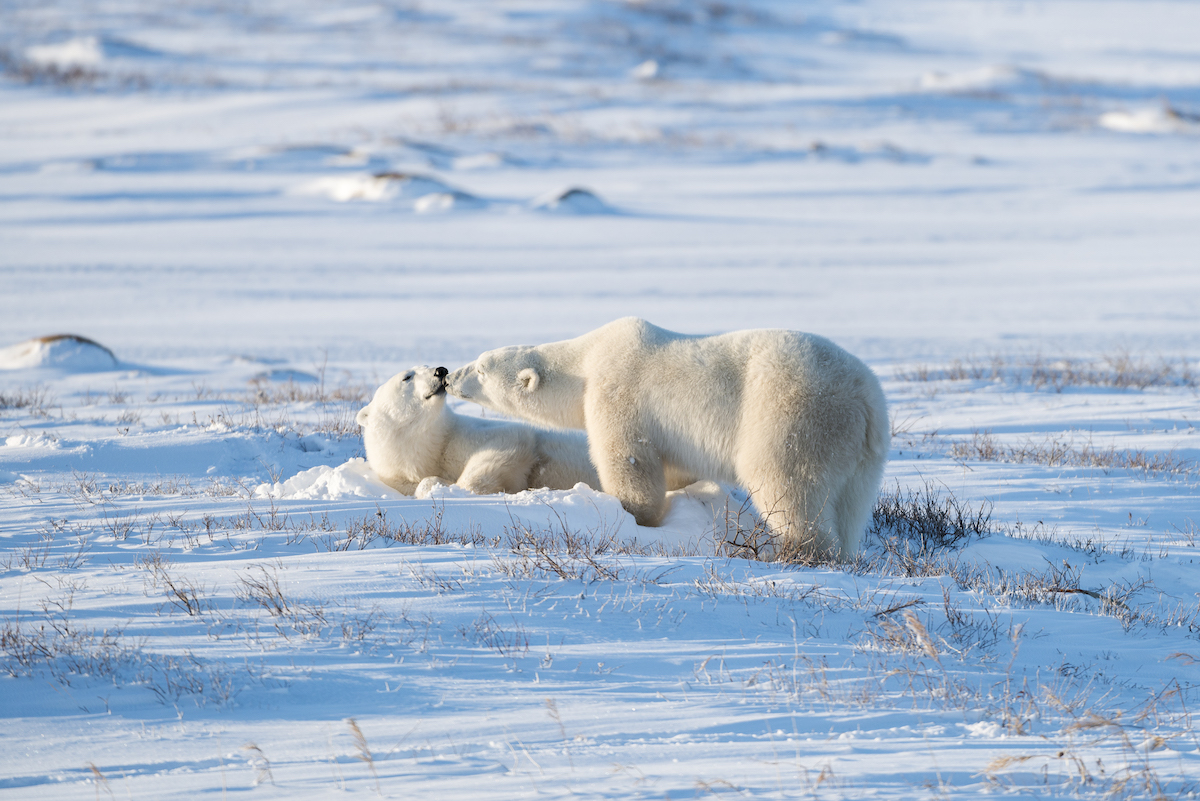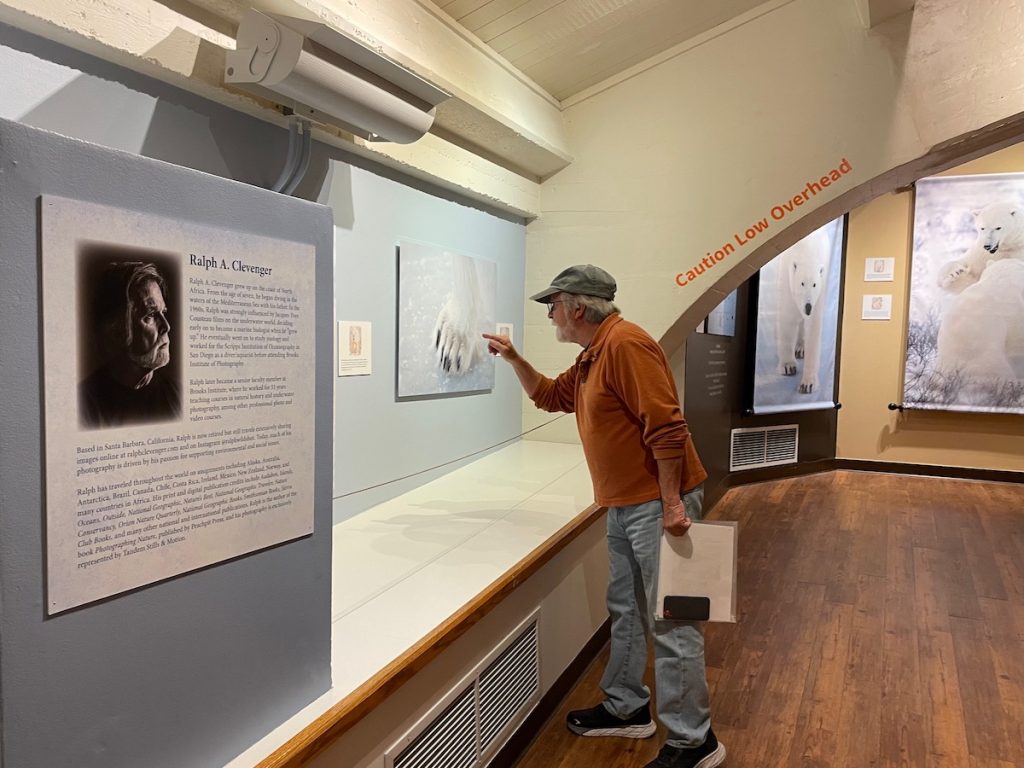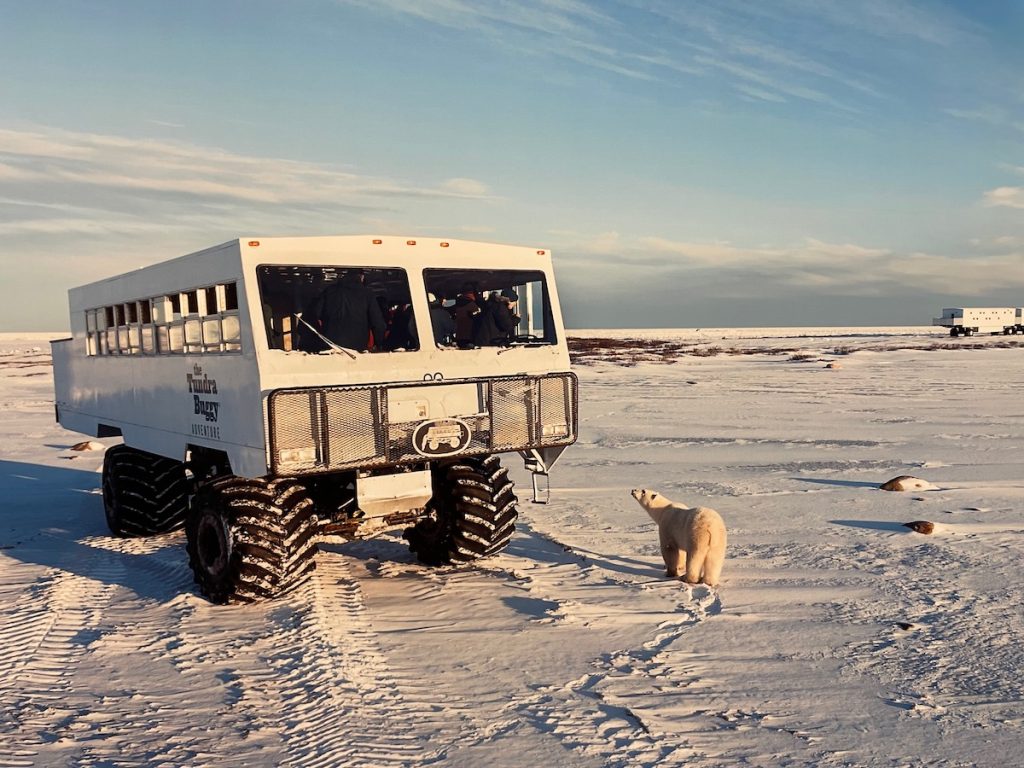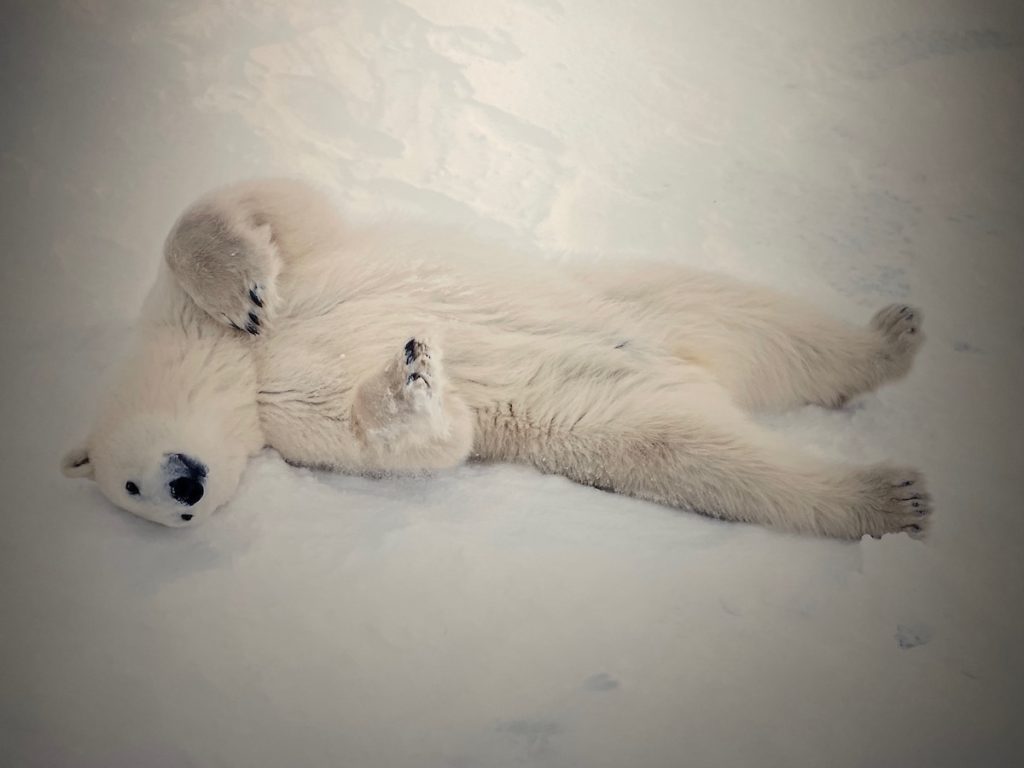“ICE BEAR:” Cool New Exhibit Comes to the SB Maritime Museum

There is something very exciting happening at the Santa Barbara Maritime Museum! Of course, there are always exciting things going on at SBMM, however this is something very special to be enjoyed (and loved!) by the entire family. Having opened on Wednesday, February 8th, the Maritime Museum’s new exhibit, ICE BEAR, puts on display a spectacular series of enlarged color photographs of polar bears and the challenging environment in which they live. Captured by photographic artist and environmentalist Ralph Clevenger, these images literally transport the viewer into the experience of these majestic animals who live in one of nature’s most vulnerable environments. The phases of their lives and their struggle to survive are brought to life through his lens.
A polar bear stranded on melting sea ice is often the image used as a symbol of rapidly changing climate. Climate change and the loss of sea ice habitat is the greatest present threat to the ice bear population. The impact of fast-moving environmental changes are felt first – and worst – in the Arctic. Polar bears rely on thick sea ice to hunt and store energy for the summer and autumn when food can be scarce. In today’s environment sea ice melts earlier in spring and forms later in autumn in the bears’ southern ranges. The shortened winter months limit their ability to store needed sustenance for the warmer months. For every week the sea ice declines the bears come ashore roughly 22 pounds lighter and in less stable condition.
Today, there are currently 26,000 polar bears living in the wild. The Hudson Bay near Churchill, Manitoba, Canada – where Clevenger’s images were captured – lies near the southern limit of where polar bears can live year-round and is one of the biggest polar bear denning (shelter) areas in the world. As temperatures drop and Hudson Bay begins to freeze, increasing numbers of bears move toward the coast and congregate along the shores of the bay, waiting until they can journey onto sea ice to begin feeding again. “Polar bears are in danger of going extinct in much of their range due to the warming arctic and were the first vertebrate species listed under the U.S. Endangered Species Act as ‘threatened’ due to predicted climate change,” explained Clevenger in describing the purpose of his images. “This was a big reason I wanted to see wild polar bears in their natural habitat.”



Ralph Clevenger’s interest in the sea began on the coast of North Africa where he grew up. He began diving in the waters of the Mediterranean Sea at the age of seven with his father. In the 1960s, he was strongly influenced by Jacques-Yves Cousteau’s films on the underwater world and decided early on to become a marine biologist. Clevenger eventually went on to study zoology and worked for the Scripps Institution of Oceanography in San Diego as a diver/aquarist before attending Brooks Institute of Photography.
Now based in Santa Barbara, Clevenger was a senior faculty member at Brooks Institute for 33 years, teaching courses in natural history and underwater photography, among other professional photo and video courses. He is now retired from his commercial photography vocation, but his images continue to express his dedication to environmental and social issues. Print and digital publication credits include Audubon, a variety of National Geographic publications, Smithsonian Books, Sierra Club Books, and many other national and international publications.
Watching Curator and Director of Collections Emily Falke and her team mount the ICE BEAR exhibit, it was obvious that an important environmental issue affecting all life on the planet was being highlighted at the Maritime Museum. “When I saw the video Ralph Clevenger filmed from the inside of a Tundra Buggy to capture the behavior of the wild and not-so-friendly polar bears interacting in their daily lives, I was fascinated,” Falke shared. “Classified as Marine Mammals because they spend so much time on ice, it was a natural fit for us – but most importantly it illustrates how the polar bear’s dependency on ice makes them especially vulnerable to the climate changes we are now experiencing.”
Looking into the eyes of the polar bears, seeing the interaction between a protective mother bear and her cubs sent a message more potent than any words can describe. “There is something so majestic and captivating about these creatures,” exclaimed Collections Manager Lydia Rao. “Ralph’s photographs transport the viewer, providing an intimate glimpse into how these animals live and survive in their natural habitat. Subject to some of the most extreme living conditions, these bears have adapted against all odds.” A true vision of adaptation and the will to survive.
ICE BEAR is an exhibit for young and old alike, a visual adventure not to be missed.The exhibit will be on view beginning on February 8th ending May 31, 2024. View Ralph Clevenger’s photographs at ralphclevenger.com and/or instagram.com/ralphwildshot. Learn more about visiting the museum at sbmm.org or by calling (805) 962-8404.






